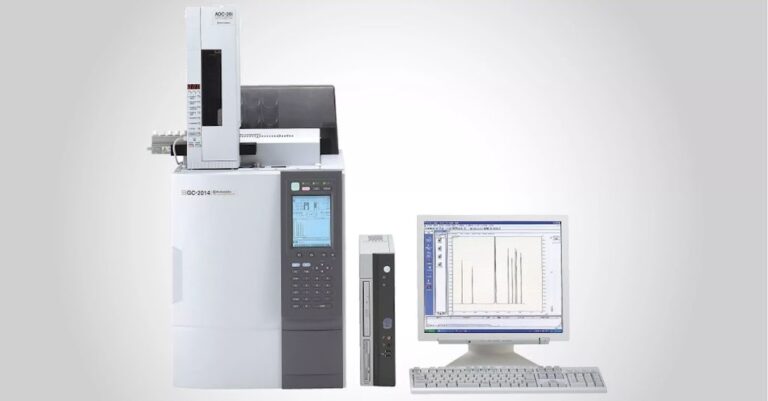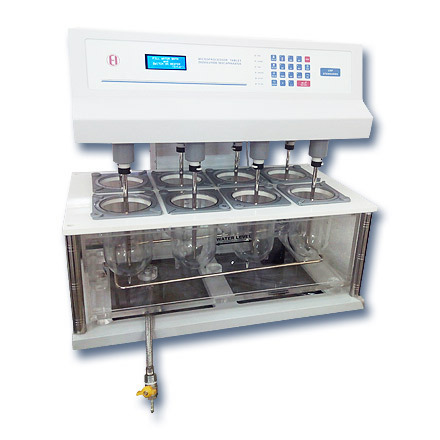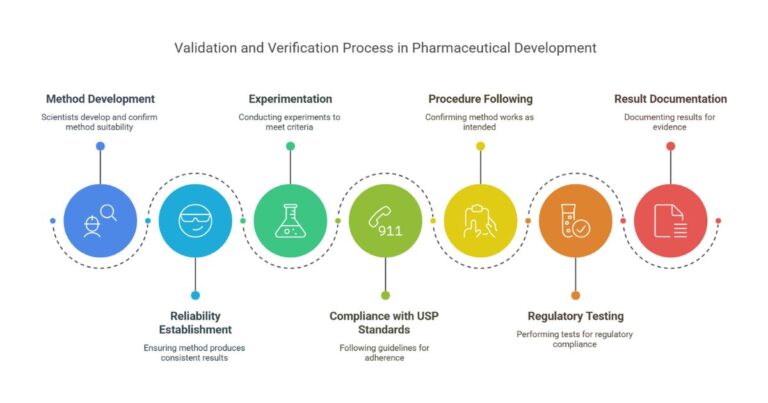Glassware used in Laboratory is very important equipment for valid analysis practices. If a 1ml pipette delivers 0.01 ml less or more in testing, the result of the analysis may differ more than 10 percent from actual results, so that the procurement of the right glassware is very crucial in quality management. It is very necessary to calibrate every glassware before introducing it in laboratory work. A documented valid SOP for Calibration of Laboratory Glassware should follow while calibration.
While procurement of glassware a proper valid method should be adopted. Generally grade A glassware has been found more accurate in its volume capacity. It is always advised to use Class A glassware in the laboratory for analysis.
SOP for Procurement and verification/calibration of laboratory glassware
Objective:
1.1 To lay down a procedure for Procurement and verification/calibration of laboratory glassware
Scope:
2.1 This procedure is applicable to the Quality Control Department of XYZ Pharma Company
Responsibility:
Quality control Officer/Executive.
Quality control Manager.
Accountability:
QA Head.
Procedure:-
5.1Procurement of glasswares
5.1.1 As per the requirement of the Quality Control laboratory, procure the glassware from Borosil, Qualigen, rankem & Schot duran (But not limited to) through supplier.
5.1.2 Executive shall inform the Manager – Quality Control if stock of glasswares goes down below the minimum quantity.
5.1.3 Manager – Quality Control or his designate shall prepare an indent, which shall be forwarded to the store department after taking approval from the authorized persons. Retain a carbon copy of the indent after receiving the indent from the store department.
5.1.4 All the Laboratory items shall be received at the store. After receiving the item, the Manager – Store shall inform the Quality Control Department through GRN (Goods Receipt Note) describing the details.
5.1.5 Manager – Quality Control or his designate shall raise a requisition slip to store for issuance of all the indented items.
5.1.6 All the materials shall be checked as per the indent / GRN (Goods Receipt Note).
5.1.7 After issuance, the stock of glassware shall be maintained in the Quality Control Department and whenever glassware is required, it shall be indented on proper requisition from the Quality Control department.
5.2 Verification / Calibration of Glassware
5.2.1Do the Verification / Calibration of glassware at 23°C ± 2°C.
5.2.2 Pharmacopoeia assay and other tests involving volumetric measurements required accurate glassware.
5.2.3 Clean the glassware for calibration/verification to remove any grease, dust, etc. by keeping it immersed in chromic acid [5% w/v of potassium dichromate in 10% v/v sulphuric acid] or as required for 30 minutes.
5.2.4 Rinse the glassware under running tap water and finally with purified water and dry at about 45°C ± 50C for 60 minutes or up to complete drying.
5.2.5 Remove the glassware from the oven and keep it in a desiccator, ensure that the ambient temperature is 25°C ± 2°C.
5.2.6 Calibrate/verification of volumetric flask
Place the volumetric flask to be calibrated/verified on the balance and note the weight, remove the volumetric flask and transfer the purified water at 27°C so that the lower meniscus of liquid in the volumetric flask is on the mark level. Weigh the volumetric flask and note down the weight. The tolerance limits for Class A and Class B volumetric flasks are given in sub-section 5.2.12 in terms of volume as well as in weight.
5.2.7 Calibrate/verification of one mark pipettes
Place a 100 ml empty beaker over the calibrated balance and note down the weight. Remove the 100 ml empty beaker and transfer the purified water through one mark pipette to be calibrated/verified in 100 ml empty beaker and note down the weight. The tolerance limits for Class A and Class B one mark pipettes are given in subsection 5.2.13 in terms of volume as well as in weight.
5.2.8 Calibrate/verification of graduated pipettes
Place a 100 ml empty beaker over the calibrated balance and note down the weight. Remove the 100 ml empty beaker and transfer the purified water through a graduated pipette to be calibrated/verified in 100 ml empty beaker and note down the weight. The tolerance limits for Class A and Class B graduated pipettes are given in subsection 5.2.14 in terms of volume as well as in weight.
5.2.9 Calibrate/verification of burette
Place a 100 ml empty beaker on the balance and note down the weight. Remove the 100 ml empty beaker and transfer the purified water through the burette to be calibrated/ verified in 100 ml empty beaker and note down the weight. The tolerance limits for Class A and Class B burettes are given in subsection 5.2.15 in terms of volume as well as weight.
5.2.10 Calibration / Verification shall be carried out at the time of receiving of new glassware in the laboratory.
5.2.11 Numbering shall be done on glassware at the time of initial calibration/verification and a record shall be maintained for Calibration / Verification of Volumetric glassware. The numbering of glassware shall be done in the following manner
DV/QC/XX-YYY-ZZZ
Where SI denotes
QC denotes QUALITY CONTROL
XX stands for glassware code e.g volumetric flask represented by VF, Pipette represented by PT, etc.
YYY stands for volume of glassware
ZZZ stands for numbering of glassware e.g 001 for first glassware.
5.2.12 Volumetric flask
5.2.12 Volumetric flask
| Nominal Capacity (ml) | 10 | 25 | 50 | 100 | 200 | 250 | 500 | 1000 |
| Tolerance ± (ml) | ||||||||
| Class A | 0.02 | 0.03 | 0.04 | 0.06 | 0.08 | 0.10 | 0.15 | 0.20 |
| Class B | 0.04 | 0.06 | 0.08 | 0.15 | 0.175 | 0.2 | 0.3 | 0.8 |
(e.g., for 10 ml volumetric flask)
Wt of empty volumetric flask = W g
Wt of volumetric flask + water (upto the mark level) = W1 g
Wt of water = W1 – W g
| Sr. No | Nominal Capacity(ml) | Class A | Class B | ||||||
| Tolerance (-) ml | Tolerance (+) ml | Tolerance (-) g | Tolerance (+) g | Tolerance (-) ml | Tolerance (+) ml | Tolerance (-) g | Tolerance (+) g | ||
| 1. | 10 | 9.98 | 10.02 | 9.9505 | 9.9904 | 9.96 | 10.04 | 9.9305 | 10.0103 |
| 2. | 25 | 24.97 | 25.03 | 24.8962 | 24.9560 | 24.94 | 25.06 | 24.8663 | 24.9859 |
| 3. | 50 | 49.96 | 50.04 | 49.8123 | 49.8920 | 49.92 | 50.08 | 49.7724 | 49.9319 |
| 4. | 100 | 99.94 | 100.06 | 99.6445 | 99.7641 | 99.85 | 100.15 | 99.5547 | 99.8539 |
| 5. | 200 | 199.92 | 200.08 | 199.3288 | 199.4884 | 199.825 | 200.175 | 199.2341 | 199.5831 |
| 6. | 250 | 249.9 | 250.1 | 249.1610 | 249.3605 | 249.8 | 250.2 | 249.0613 | 249.4602 |
| 7. | 500 | 499.85 | 500.15 | 498.3719 | 498.6711 | 499.7 | 500.3 | 498.2224 | 498.8206 |
| 8. | 1000 | 999.8 | 1000.2 | 996.8436 | 997.2424 | 999.2 | 1000.8 | 996.2454 | 997.8406 |
Remarks:
1.The weight of 1ml of water at 25ºC is 0.997043 g and all the calculations are done with this weight.
2. During calibration the observed weight of purified water should be within the tolerance limit.
5.2.13 one mark pipettes
| Nominal Capacity (ml) | 1 | 2 | 5 | 10 | 20 | 25 | 50 | 100 |
| Tolerance Class A ± (ml) | 0.01 | 0.01 | 0.02 | 0.02 | 0.03 | 0.03 | 0.04 | 0.06 |
| Tolerance Class B ± (ml) | 0.02 | 0.02 | 0.03 | 0.04 | 0.05 | 0.06 | 0.08 | 0.12 |
(e.g., for 10 ml one mark pipette)
Wt taken of empty beaker = W g
Transfer the water through one mark pipette to be calibrated.
Wt of beaker + water = W1 g
Wt of water = W1 – W g
| Sr. No | Nominal Capacity(ml) | Class A | Class B | ||||||
| Tolerance (-) ml | Tolerance (+) ml | Tolerance (-) g | Tolerance (+) g | Tolerance (-) ml | Tolerance (+) ml | Tolerance (-) g | Tolerance (+) g | ||
| 1. | 1 | 0.99 | 1.01 | 0.9871 | 1.0070 | 0.98 | 1.02 | 0.9771 | 1.0170 |
| 2. | 2 | 1.99 | 2.01 | 1.9841 | 2.0041 | 1.98 | 2.02 | 1.9741 | 2.0140 |
| 3. | 5 | 4.98 | 5.02 | 4.9653 | 5.0052 | 4.97 | 5.03 | 4.9553 | 5.0151 |
| 4. | 10 | 9.98 | 10.02 | 9.9505 | 9.9904 | 9.96 | 10.04 | 9.9305 | 10.0103 |
| 5. | 20 | 19.97 | 20.03 | 19.9109 | 19.9708 | 19.95 | 20.05 | 19.8910 | 19.9907 |
| 6. | 25 | 24.97 | 25.03 | 24.8962 | 24.9560 | 24.94 | 25.06 | 24.8663 | 24.9859 |
| 7. | 50 | 49.96 | 50.04 | 49.8123 | 49.8920 | 49.92 | 50.08 | 49.7724 | 49.9319 |
| 8. | 100 | 99.94 | 100.06 | 99.6445 | 99.7641 | 99.88 | 100.12 | 99.5847 | 99.8239 |
Remarks:
1. The weight of 1ml of water at 25ºC is 0.997043 g and all the calculations are done with this weight.
2. During calibration the observed weight of purified water should be within the tolerance limit.
5.2.14 Graduated Pipette (Subdivision)
| Nominal Capacity (ml) | 1 | 2 | 5 | 10 | 25 |
| Subdivision (ml) | 0.01 | 0.02 | 0.05 | 0.10 | 0.2 |
| Tolerance ± (ml) | |||||
| Class A | 0.006 | 0.01 | 0.03 | 0.05 | 0.1 |
| Class B | 0.02 | 0.06 | 0.10 | 0.15 | NA |
(e.g., for 10 ml graduated pipette)
Wt taken of empty beaker = W gm
Transfer the water through Graduated pipette to be calibrated.
Wt of beaker + water = W1 gm
Wt of water = W1 – W gm
| Sr. No | Nominal Capacity(ml) | Class A | Class B | ||||||
| Tolerance (-) ml | Tolerance (+) ml | Tolerance (-) g | Tolerance (+) g | Tolerance (-) ml | Tolerance (+) ml | Tolerance (-) g | Tolerance (+) g | ||
| 1. | 1 | 0.994 | 1.006 | 0.9911 | 1.0030 | 0.98 | 1.02 | 0.9771 | 1.0170 |
| 2. | 2 | 1.99 | 2.01 | 1.9841 | 2.0041 | 1.94 | 2.06 | 1.9343 | 2.0539 |
| 3. | 5 | 4.97 | 5.03 | 4.9553 | 5.0151 | 4.90 | 5.10 | 4.8855 | 5.0849 |
| 4. | 10 | 9.95 | 10.05 | 9.9206 | 10.0203 | 9.85 | 10.15 | 9.8209 | 10.1200 |
| 5. | 25 | 24.9 | 25.1 | 24.8264 | 25.0258 | NA | NA | NA | NA |
Remarks:
1. The weight of 1ml of water at 25ºC is 0.997043 g and all the calculations are done with this weight.
2. During calibration the observed weight of purified water should be within the tolerance limit.
5.2.15 Burette
| Nominal Capacity (ml) | 10 | 25 | 50 | 100 |
| Subdivision (ml) | 0.05 | 0.05 | 0.10 | 0.10 |
| Tolerance ± (ml) | ||||
| Class A | 0.01 | 0.03 | 0.05 | 0.10 |
| Class B | 0.02 | 0.06 | 0.10 | 0.20 |
(e.g., for 10 ml burette)
Wt taken of empty beaker = W g
Transfer the water through burette to be calibrated.
Wt of beaker + water = W1 g
Wt of water = W1 – W g
| Sr. No | Nominal Capacity(ml) | Class A | Class B | ||||||
| Tolerance (-) ml | Tolerance (+) ml | Tolerance (-) g | Tolerance (+) g | Tolerance (-) ml | Tolerance (+) ml | Tolerance (-) g | Tolerance (+) g | ||
| 1. | 10 | 9.99 | 10.01 | 9.9605 | 9.9804 | 9.98 | 10.02 | 9.9505 | 9.9904 |
| 2. | 25 | 24.97 | 25.03 | 24.8962 | 24.9560 | 24.94 | 25.06 | 24.8663 | 24.9859 |
| 3. | 50 | 49.95 | 50.05 | 49.8023 | 49.9020 | 49.9 | 50.1 | 49.7524 | 49.9519 |
| 4. | 100 | 99.9 | 100.10 | 99.6046 | 99.8040 | 99.8 | 100.2 | 99.5049 | 99.9037 |
Remarks:
1. The weight of 1ml of water at 25ºC is 0.997043 g and all the calculations are done with this weight.
2. During calibration the observed weight of purified water should be within the tolerance limit.
5.3 If any discrepancy is observed during calibration/verification reject the glassware immediately and in that case, don’t take it into account and inform QC manager for further necessary action.
Purified water to be taken for calibration/verification of new glasswares
List of annexure and formats.
None
References
SOP on SOPs.
IP/USP
Safety Precautions
None.
Abbreviations
9.1 SOP : Standard Operating Procedure
9.2 QC : Quality Control
9.3 QA : Quality assurance
9.4 0C: Degree Celsius
9.5 ml : Milliliter.
9.6 g : Gram.
9.7 IP : Indian Pharmacopoeia
9.8 USP : United state Pharmacopoeia
10.0 Recommended Distribution:
| S. No | Department | Distribution [Yes / No] |
| 01 | Quality Control Chemical section | Yes |
Revision History
| SOP Number | Effective Date | Revision Date | Changes done | Change control number |
| QC-06-R02 | 01-08-2015 | 01-08-2017 | Periodic Revision | – |
Related Posts:
SOP for OOS results in Environment Monitoring
SOP for Preventive Maintenance of HPLC
- SOP for Environment monitoring
- Principle of Fluidized Bed Dryer
- SOP for Preparation of Sanitizing solution
- Importance of Validation in Pharmaceutical Company
- SOP for Rodents Insects & Birds control in Production
- Principle of HPLC SOP for fumigation of Microbiology Lab



